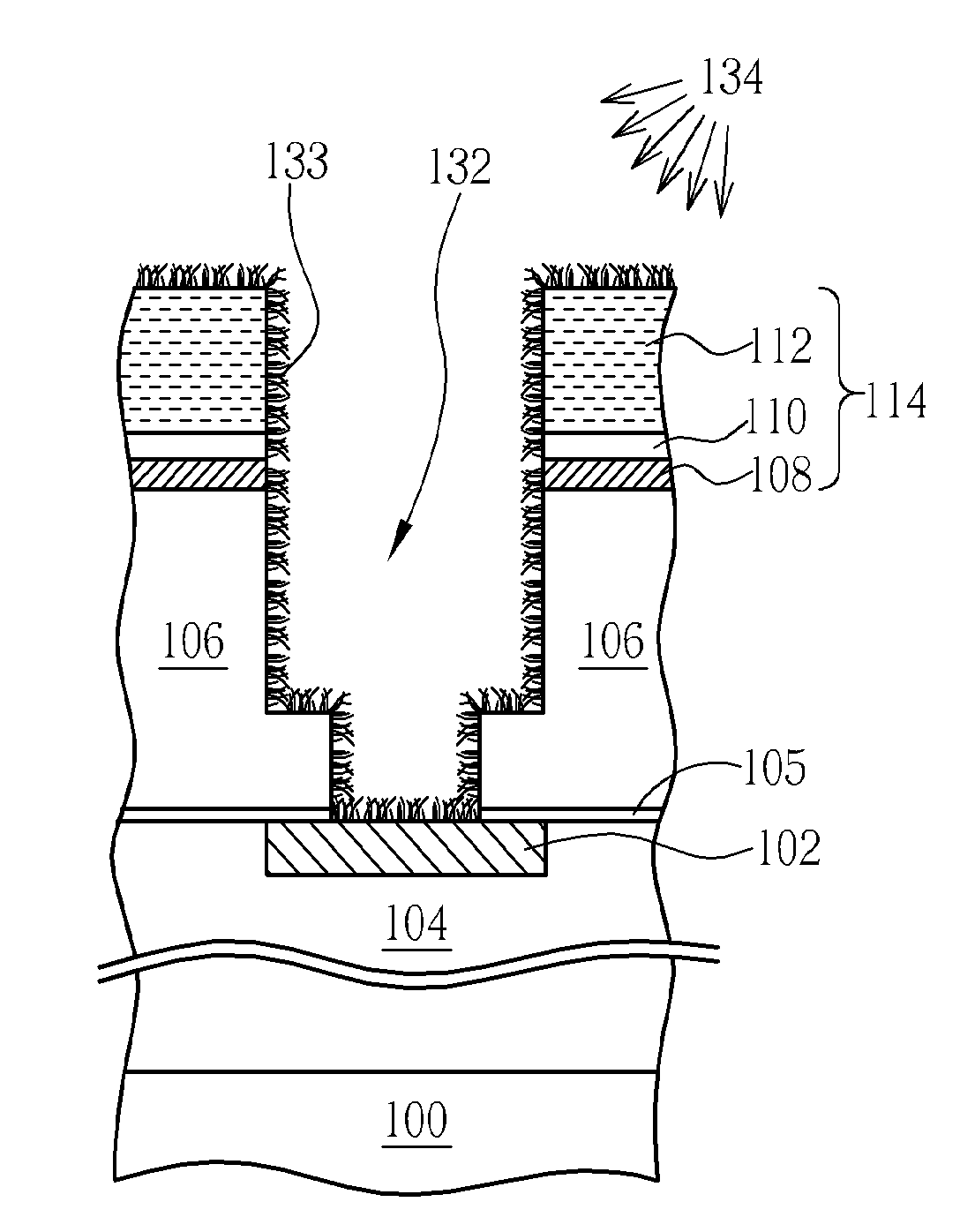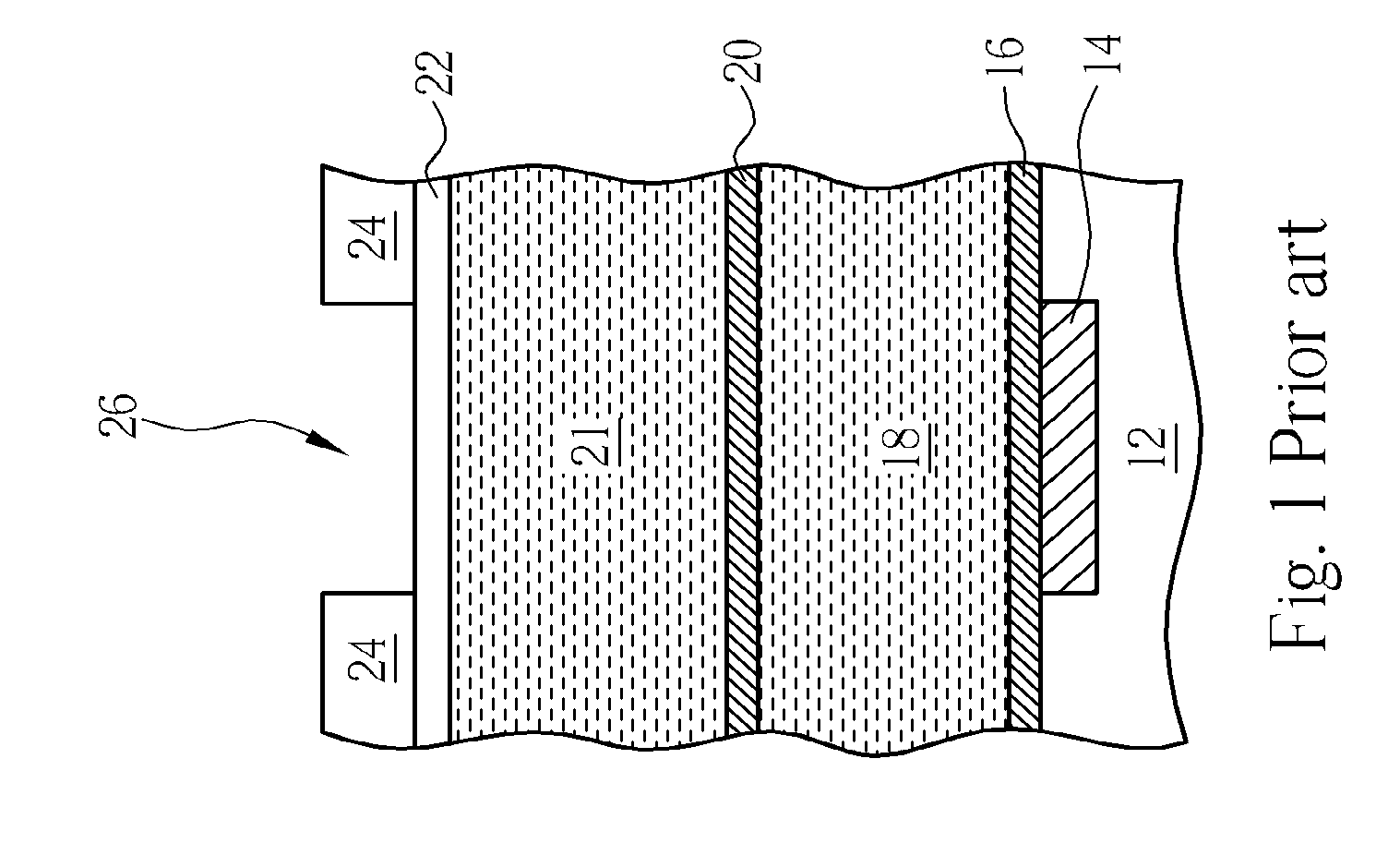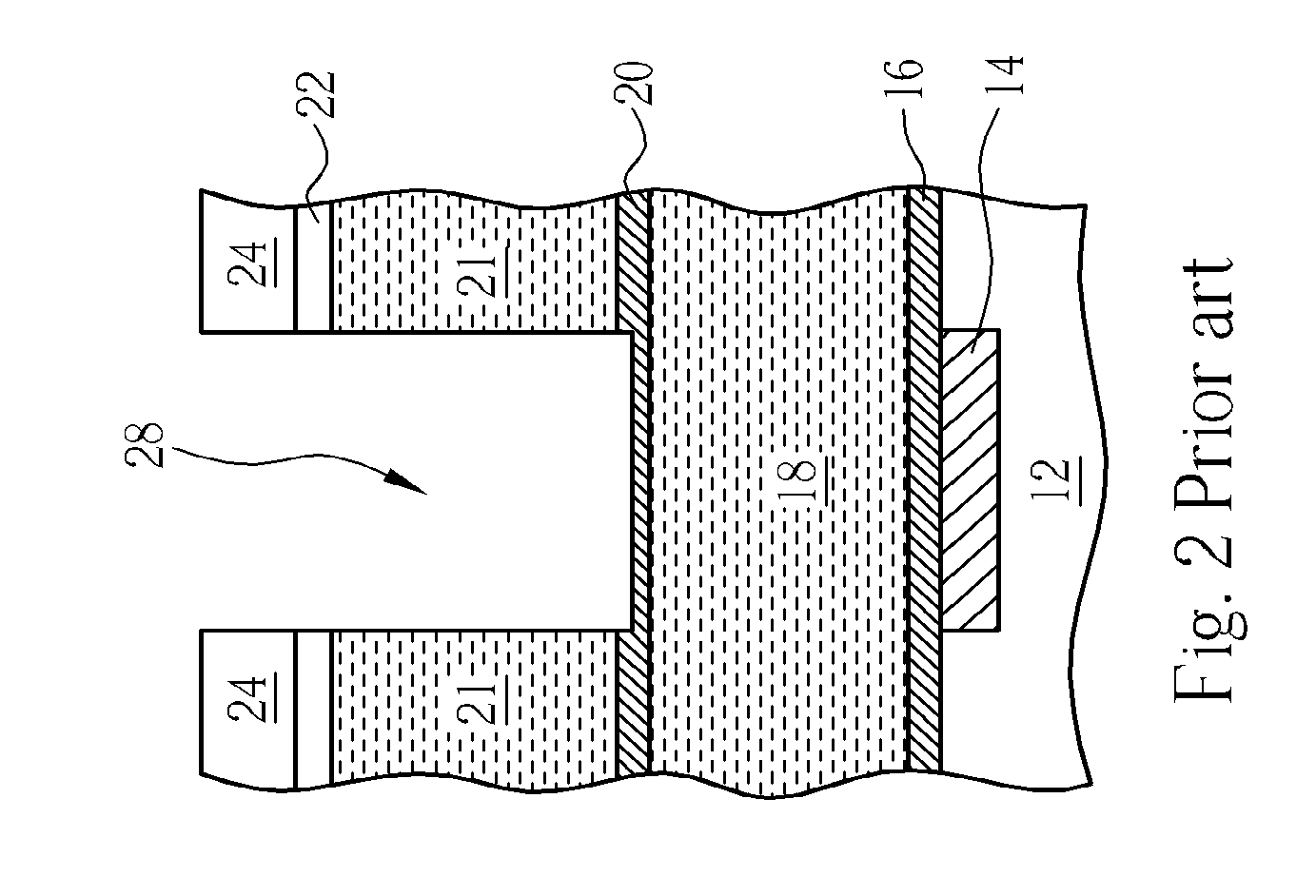Method for fabricating a dual damascene and polymer removal
a dual-damascene and polymer technology, applied in semiconductor/solid-state device manufacturing, basic electric elements, electric apparatus, etc., can solve the problems of increased resistance and rc delays, device defects, and previous cleaning processes that are ineffective in removing polymers from osg and other low-k dielectric sidewalls, etc., to achieve easy removal and low cost
- Summary
- Abstract
- Description
- Claims
- Application Information
AI Technical Summary
Benefits of technology
Problems solved by technology
Method used
Image
Examples
Embodiment Construction
[0018] Please refer to FIGS. 6-11. FIGS. 6-11 are schematic diagrams of a trench-first dual damascene process according to the present invention. As shown in FIG. 6, a semiconductor substrate 100 is provided, wherein the semiconductor substrate 100 has a conductive layer 102 thereon and is positioned in a first dielectric layer 104. Then, a bottom layer 105, a second dielectric layer 106, an etch-stop layer 108, a metal layer 110, a mask layer 112, and a first BARC layer 116 are formed over the first dielectric layer 104 and the conductive layer 102. The etch-stop layer 108, metal layer 110, and the mask layer 112 form a composite layer serving as a hard mask 114 during the follow-up etching processes. The etch-stop layer 108 is a SiC layer. The metal layer 110 is preferably a titanium nitride (TiN) layer or a tantalum nitride (TaN) layer. The mask layer 112 is selectively formed with a plasma enhanced oxide (PEOX) layer. In addition, the bottom layer 105 is a SiN layer, and the sec...
PUM
 Login to View More
Login to View More Abstract
Description
Claims
Application Information
 Login to View More
Login to View More - R&D
- Intellectual Property
- Life Sciences
- Materials
- Tech Scout
- Unparalleled Data Quality
- Higher Quality Content
- 60% Fewer Hallucinations
Browse by: Latest US Patents, China's latest patents, Technical Efficacy Thesaurus, Application Domain, Technology Topic, Popular Technical Reports.
© 2025 PatSnap. All rights reserved.Legal|Privacy policy|Modern Slavery Act Transparency Statement|Sitemap|About US| Contact US: help@patsnap.com



